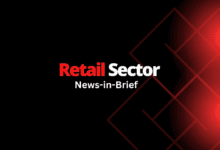Understanding consumer psychology: A retailer’s guide to boosting sales
In the retail industry, success is not solely about offering great products or competitive prices; it's also about understanding consumer psychology. To thrive in today's competitive landscape, retailers must delve into the minds of their customers, decipher their desires, and anticipate their needs. This article serves as a comprehensive guide to help retailers gain insights into consumer psychology and leverage this knowledge to boost sales.

Consumer psychology is the study of how individuals make decisions related to purchasing goods and services. It explores the intricate web of thoughts, emotions, and behaviours that drive consumers to choose one product over another. Understanding consumer psychology is akin to having the keys to unlocking the potential of your retail business.
Perception and first impressions
A crucial aspect of consumer psychology is perception. Shoppers often form their first impressions within seconds of entering a store or visiting an online shop. Factors like store layout, product display, and website design play a pivotal role in shaping these impressions. Retailers can capitalise on this by ensuring that their physical and digital storefronts are inviting, well-organised, and aesthetically pleasing.
Emotional influence
Emotions are a powerful driver of consumer behaviour. Shoppers make purchases based on how a product makes them feel, rather than just its features or price. Retailers can tap into this by crafting compelling narratives around their products, using storytelling in marketing campaigns, and evoking positive emotions through branding and customer experiences.
Social proof and FOMO (Fear of Missing Out)
Consumers often seek validation from others when making purchasing decisions. They are influenced by social proof, which includes customer reviews, testimonials, and recommendations. Retailers can harness the power of social proof by encouraging satisfied customers to leave reviews, showcasing endorsements from influencers, and creating a sense of FOMO through limited-time offers and exclusive deals.
Scarcity and urgency
The fear of missing out extends to scarcity and urgency as well. When consumers perceive a product as scarce or available for a limited time, they are more likely to make a purchase. Retailers can employ tactics like “only a few items left” notifications and countdown timers for promotions to trigger this psychological trigger.
Cognitive biases
Cognitive biases are inherent shortcuts in human thinking that affect decision-making. Retailers can use these biases to their advantage. For example, anchoring bias occurs when consumers rely heavily on the first piece of information they receive. Retailers can anchor prices by displaying a higher original price next to a discounted one, making the discount seem more substantial.
Brand Loyalty and Trust
Building brand loyalty and trust are essential aspects of consumer psychology. Shoppers are more likely to return to a brand they trust and feel connected to. Retailers can cultivate trust through transparent communication, excellent customer service, and consistency in product quality.
Personalisation is becoming increasingly vital in the world of consumer psychology. Shoppers appreciate personalized recommendations and offers. Retailers can leverage data to tailor marketing messages and product recommendations to individual preferences.



